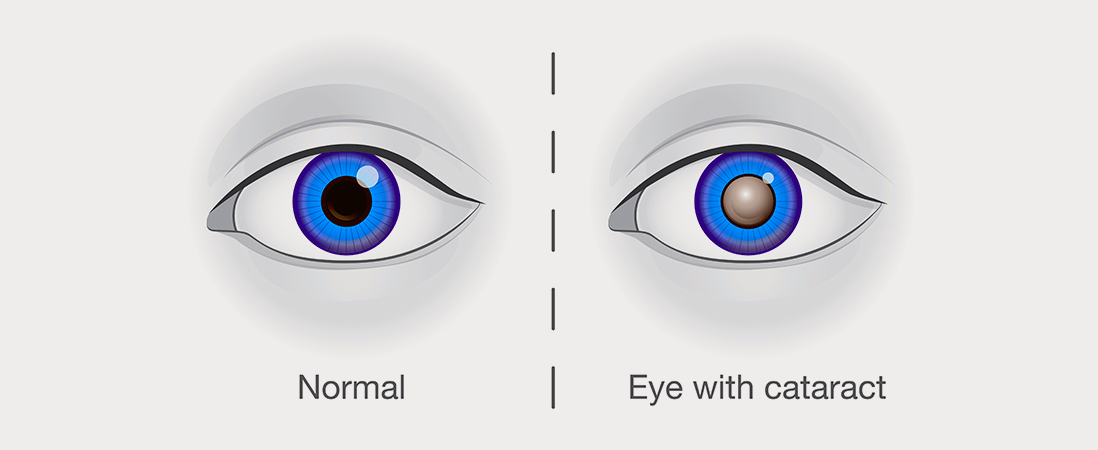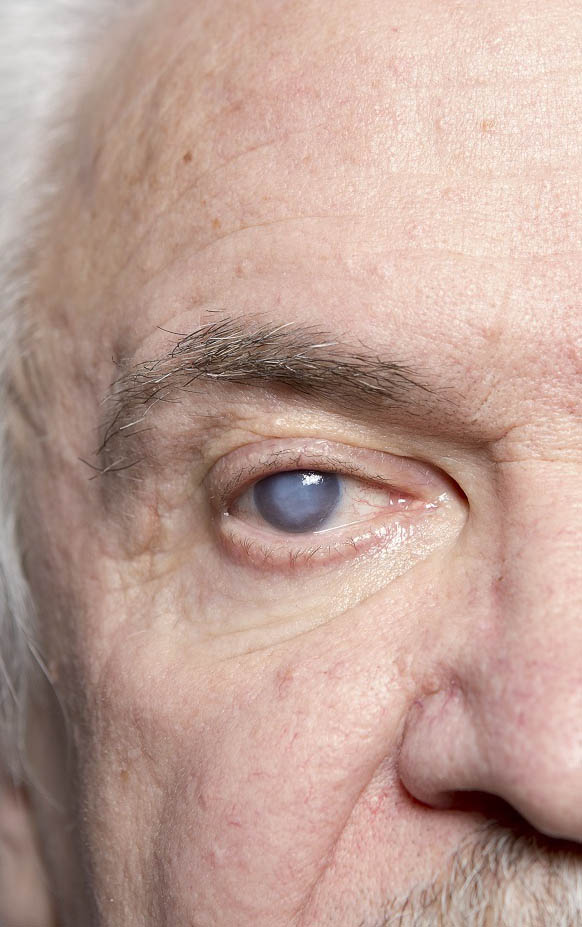Color vision deficiency (also called color blindness) is a vision disorder in which a person…

A cataract is clouding of the lens of the eye. As protein fibers in the lens clump together, the clouding worsens and prevents some light rays from passing through the lens and reaching the retina, the light-sensitive membrane that lines the inside of the back of the eye. Because cataracts usually develop very slowly, early vision changes may not be noticeable. However, as the cataract grows denser, the person’s vision gradually worsens. Cataracts usually do not cause pain.
There are several different types of cataracts. Congenital cataracts are present from birth, or cataracts may develop during childhood. In adults, the most common type of cataract is an age-related cataract, which can begin to develop when a person is in his or her 40s or 50s. Most cataracts are age-related. Another type of cataract is a secondary cataract, which usually develops in people with a chronic disease, especially diabetes. A traumatic cataract is a cataract that develops as a result of an eye injury.
Treatments
If you have a cataract, the doctor will work with you to determine the best course of treatment. In the early stages of a cataract, prescription glasses (bifocals), a magnifying glass for reading or other activities that require you to see things close up, or stronger lighting at home or at work may help you see better. However, when such measures are no longer helpful, your doctor probably will recommend surgery to remove the clouded lens and implant a substitute lens. If cataract surgery is an option, the doctor will explain the risks and benefits of the surgery.
Many eye diseases have no early symptoms. They may be painless, and you may see no change in your vision until the disease has become quite advanced.




